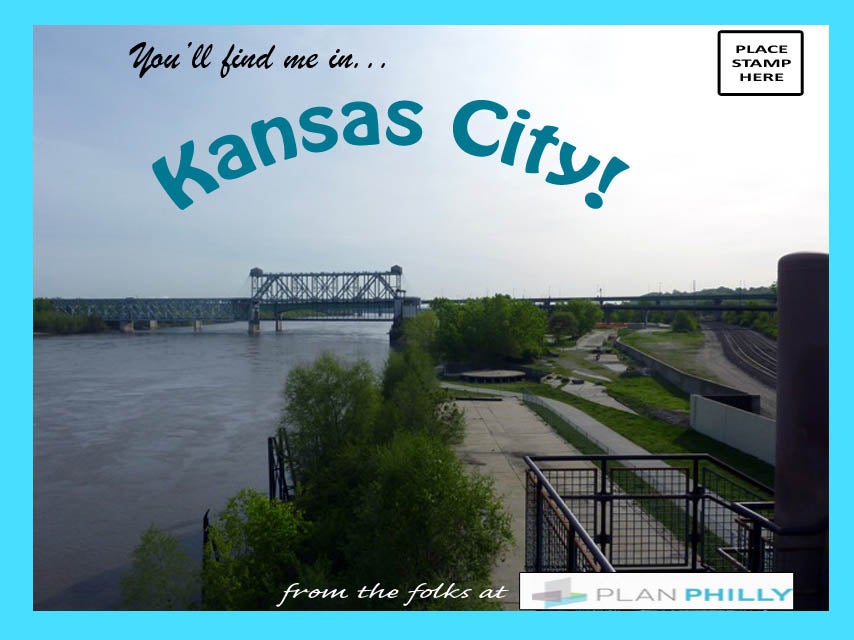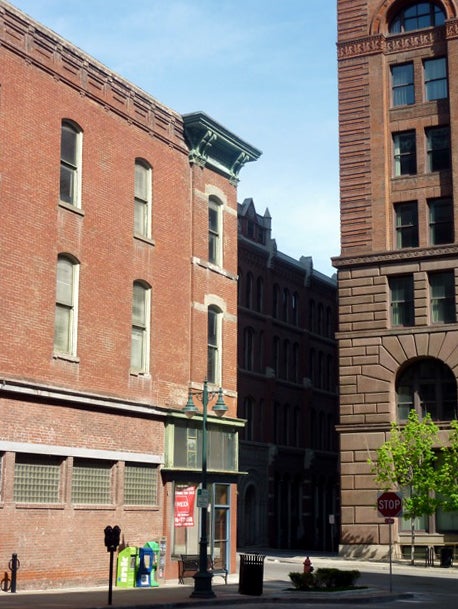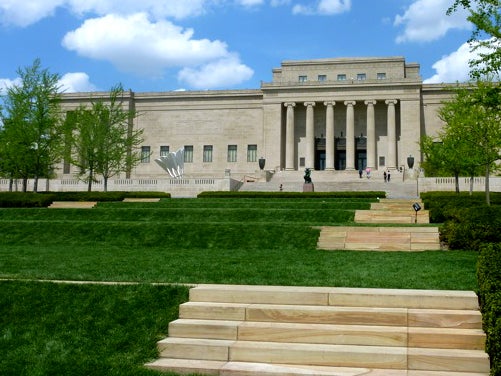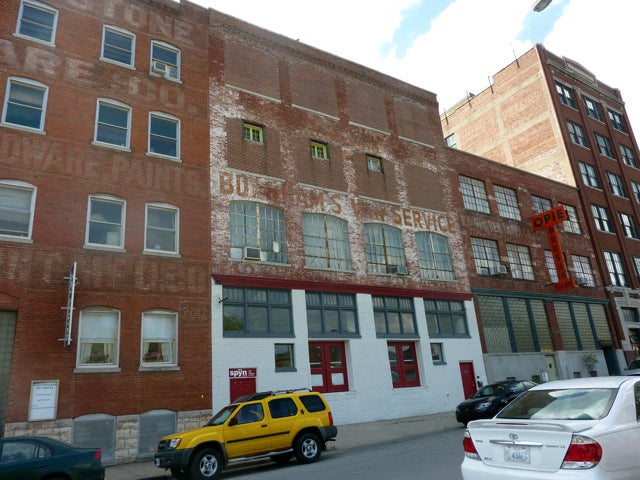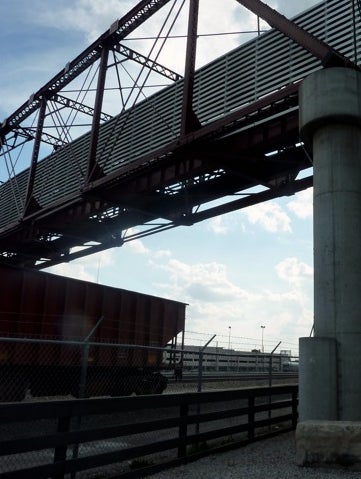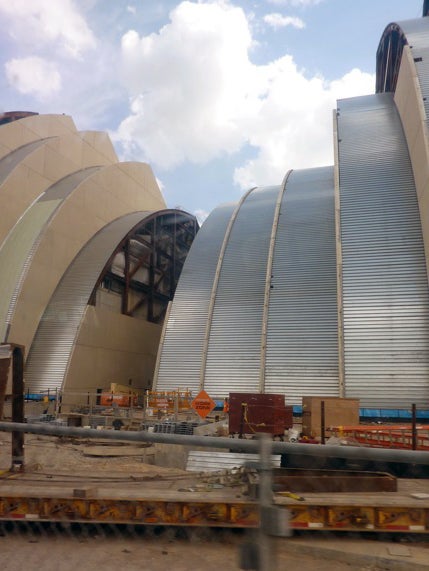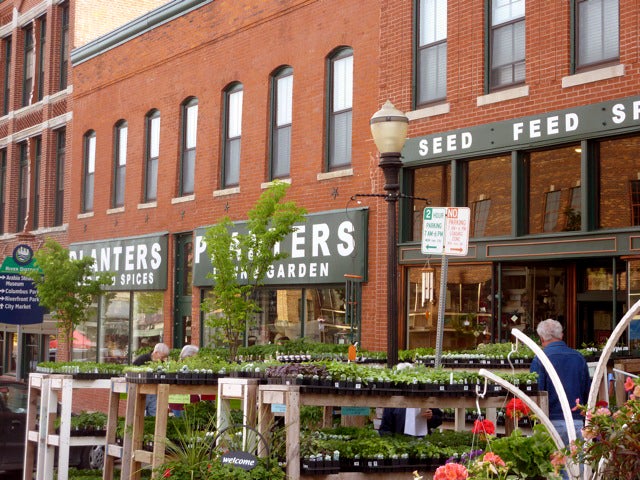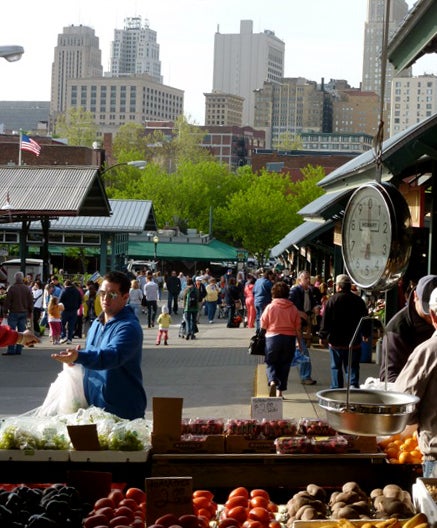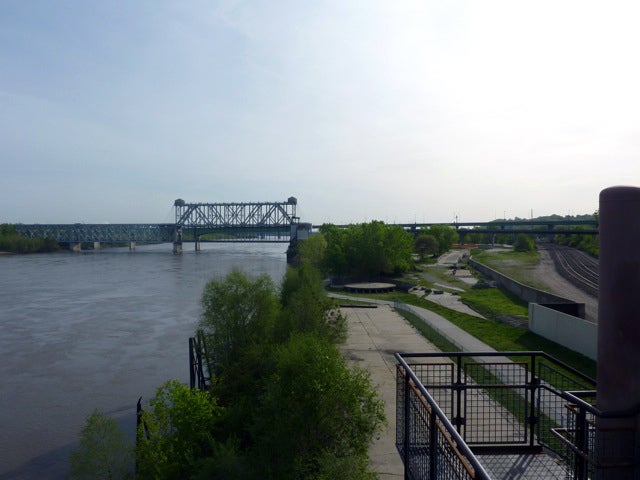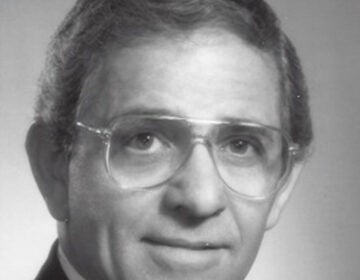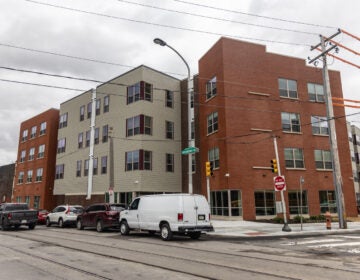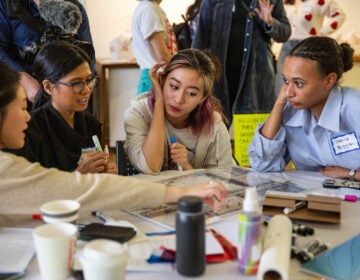Postcard from Kansas City: a planner’s paradise
By JoAnn Greco
For PlanPhilly
Although I’d never really heard anything negative about the City of Fountains, I wasn’t prepared for the great impression Kansas City, Missouri, made right from the minute I arrived at my hotel. Located a block from a riverwalk lined with blossoming redbuds, the hotel — the recently-renovated Raphael, an adaptive reuse of a 1927 apartment — served as a gateway for me to explore the eye-catching Country Club Plaza.
I’d never heard of it, but it’s apparently well-known and well-regarded in planning circles. Dating to 1922 and billing itself as the country’s first master-planned outdoor mall, the Plaza was built by J. C. Nichols, a developer who spent $1 million and 10 years acquiring parcel by parcel to accumulate 55 acres. Today, this shopping area maintains a pleasant street grid as it rambles over 14 blocks of a quite accurate rendering of Seville’s stucco, turrets, mosaics, and red tile roofs. Think Ardmore’s Suburban Square on a larger scale.
When I get home, my sense that something about this place works was confirmed by a Project for Public Spaces report that names it as one of the world’s 60 great places. Though I have my doubts, in a city that boasts that it has more fountains than Rome and more boulevards than Paris, the accolade might actually be fitting.
About those boulevards. They’re one of the most striking things about this city. Their width and grandeur seems right, where in Philly they often seem out of scale and pompous. (I’m talking about you, Ben Franklin Parkway). Visits to the magnificent World War I monument or the quite good Nelson-Atkins Museum of Art — the former set on 26 acres, the latter on 22 acres —further hit home the point that this place is comfortable in its bigness. It has a lot of space and it’s not afraid to leave vistas and vacuums. You might not like it, but you’ll notice it right away.
Coming to this sturdily midwestern city a day after I returned from the American Planning Association’s convention in New Orleans, I couldn’t help contrasting the two. One so intimate and boisterous, the other so grand and reserved. One with a (mediocre) World War II museum, the other with a (much better) World War I museum. One kind of grimy and worn, one clean as a whistle and fresh-faced. Both, pivotal in the fostering of jazz.
I loved New Orleans and I’d return again and again. I liked Kansas City, though, a lot. And that surprised me. “This place is just so darned pleasant,” I kept muttering to myself. It’s almost idyllic.
Imagine my surprise when not a half hour into my walk around Country Club Plaza, I picked up a copy of the Kansas City Star and read the headline “K.C.’s Youth Violence to Soar to Top of Agenda.” The story went on: “In aftermath of last weekend’s disruptive crowds on the Plaza, police plan to meet with community groups.” Flash mobs had arrived here, too!
This being K.C., though, subsequent stories found hands being wrung over whether the Twittering youths — some 900, most of them reportedly African-American and some as young as 11 or 12 — had enough after-school activities and amenities at their disposal.
By Friday, though, the writing was on the wall. “Extra officers will be aided by helicopter as they monitor for disruptions.” All was not as perfect as it seemed in this city of 450,000 nestled on the border of Missouri and Kansas. Turns out, in fact, that the place has more crime than the similarly-sized but more ill-reputed New Orleans.
It’s easy to avoid the city’s patchy areas, though, thanks to a 4-mile central corridor that links the Plaza to the Missouri River, passing through neighborhoods like Westport (filled with 1920s-era red brick buildings, a Manayunk-like area that works mainly as a bar-hopping center) and Crown Center (an office campus that serves as HQ for Hallmark).
Noteworthy among these neighorhoods is the Crossroads arts district, a rough-around-the-edges area that’s like Northern Liberties and offers about 30 galleries, plus several independent boutiques, from a lovingly curated lingerie shop to Webster House, an 1885 Romanesque Revival schoolhouse that sells clothing and antiques and serves lunch and dinner.
Finally, there’s downtown, where $4 billion has been invested and 17,000 people now live. Its core is a highly developed but not overly-skyscrapered walkable area of about 8 square blocks, filled with a wonderful collection of mid-rise red brick buildings that lend the city a muscular urbanity, despite its wide streets and remarkable lack of ground floor retail. The area is roughly bounded by the recently-expanded Convention Center to the almost complete $850-million Power & Light District.
Nearly doubling the main part of downtown — five years ago, this area was home to a raggedy melange of surface parking lots and fringe retail outlets like wig shops and pawn brokers — this development has created an insta-city that is nonetheless attractive and inviting. Even in daytime, a few retail outlets — such as a stunning food hall, Cosmino’s — and a recently-opened historic movie house (inside, it’s been completely remodeled, alas) keep things if not hopping, at least used. Here, too, there’s an odd commonality with New Orleans — along with the Crescent City, the Power & Light District is the only place in the U.S. where a special liquor license dispensation allows drinkers to bring their booze with them from place to place.
Strolling this district, it’s hard to miss a structure being built nearby which bears more than a passing resemblance to the Sydney Opera House. Like its model, this too will be a performing arts center — designed by Moshe Safdie, architect of Philly’s long-delayed Free Library expansion. Scheduled for a 2012 opening, the project’s distinctive sails and extensive grounds will form a nice, easy link to the Crossroads and help to fill in the three unappealing blocks in between.
The Crossroads already benefits from another pedestrian link — in the form of a railroad bridge relocated from the Missouri River — that connects it to the 1914 Beaux Art Union Station (which houses a railroad museum and a kids’ science center, and still serves as an Amtrak stop) and further, via skywalks, to Crown Center.
It’s possible, then, to walk the entire stretch from the river to Crown Center, a distance of about 1 1/2 miles, without running into any shady spots.
A good stopping-off point, mid-jaunt, is the re-tooled Freight House, the station’s old train shed, which now sports three restaurants. I sampled my first Kansas City barbecue — after all, no less an authority than New York writer Calvin Trillin had pronounced this, his hometown, the greatest dining city in the world — at a branch of Jack Stack’s. Sitting out back for an hour or so, I found, was a great opportunity for trainspotting, as freight train after freight train shuttled by.
I’d spent three days in town, without getting close to the Missouri and on my final day, I thought I’d rectify that by strolling about 15 minutes north of downtown. Along the way, I passed an emerging loft district — home to the city’s old garmentmakers — and then the only blocks of disinvestment left in downtown. Just past here, the definite aroma of brewing coffee — courtesy of the Folgers plant — led me to City Market, the city’s 150-year-old outdoor farmers’ market. Packed by 9am on a Saturday morning, the market echoes those found in D.C. and San Francisco, but, again, charms mostly because of its unexpectedness.
The city’ riverfront includes a rather hidden away pedestrian bridge — follow the joggers — that juts over the Missouri River and then spirals down to a recently tidied-up recreational path. Here, as elsewhere in town, Kansas City’s position as America’s leading railroad center (as measured by tonnage) is keenly felt. A handful of picturesque trestle bridges cross the river, and they’re seldom without trains.
Standing here, I thought about the Schuylkill riverfront downtown and how, especially after its superb restoration of recent years, it’s superior to the current incarnation of Penn’s Landing. I thought about how the latter kind of development — the ones with concrete esplanades and tree-less expanses — always seem to fail. And I thought about how even Kansas City, with its Country Club Plaza and its Power and Light District, realizes that tidy and manufacturered can work, but it isn’t the only answer.
Contact JoAnn Greco at www.joanngreco.com
Check out her new online magazine, TheCityTraveler at www.thecitytraveler.com
Previous postcards: Paris, Detroit Part 1, Austin, China, San Francisco, Germany, Pittsburgh, New Orleans, New York City, Boston, San Antonio, Minneapolis, Detroit Part 2, Templehof, Chicago, Italy, St. Louis, Houston.
WHYY is your source for fact-based, in-depth journalism and information. As a nonprofit organization, we rely on financial support from readers like you. Please give today.



